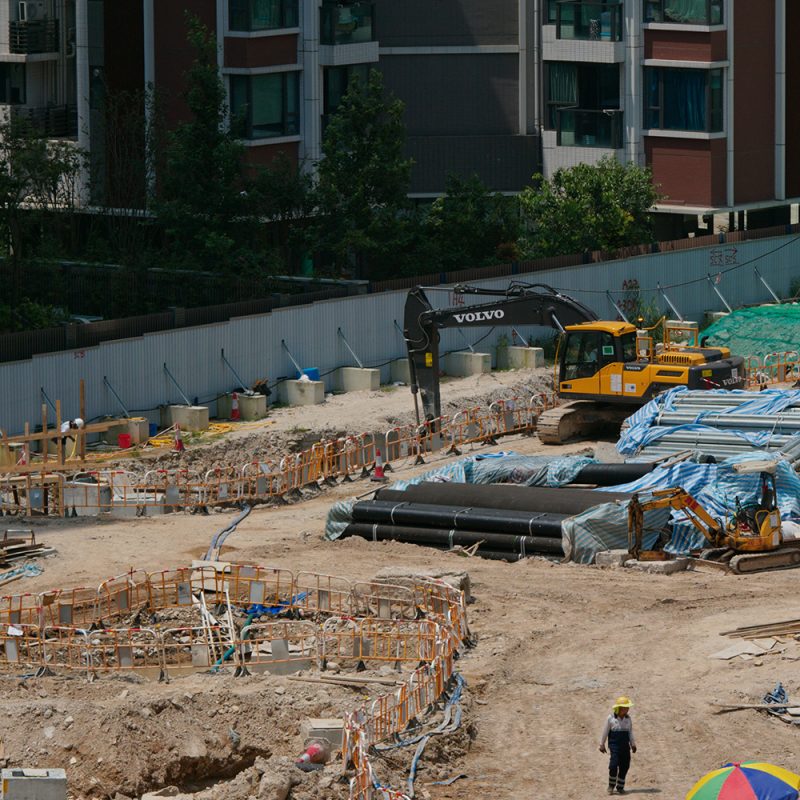Construction Sweeping for a Cleaner Construction Site | Efficient Cleanup Solutions
Construction sites are renowned for their bustling and often chaotic nature, characterized by noise, dust, and congestion. Yet, the significance of maintaining cleanliness and tidiness on construction sites is frequently underestimated. Cleanliness not only ensures the safety of workers and visitors but also serves as a crucial element in adhering to federal regulations. This article delves into the pivotal role of pavement sweeping in upholding cleanliness standards on construction sites.
Adhering to Federal Mandates
In accordance with the Clean Water Act of 1972, construction sites are mandated to implement a Stormwater Pollution Prevention Plan (SWPPP) to mitigate erosion and minimize the discharge of pollutants into nearby water bodies. Pavement and street sweeping stand out as a best management practice (BMP) in facilitating compliance with SWPPP regulations. By eliminating sediment and pollutants from the site, sweeping mitigates the risk of these contaminants being transported off-site and polluting nearby water bodies. This proactive measure not only reduces the environmental impact but also shields construction companies from potential fines and legal repercussions imposed by regulatory bodies.
Track Out Management
Track out, the transportation of construction materials like dirt and gravel from the site onto adjacent streets, sidewalks, and storm drains, poses multifaceted challenges, ranging from air quality concerns to potential water contamination. Effective track out control is imperative to curtail erosion, minimize airborne dust, and prevent pollutants from infiltrating nearby water bodies. Pavement sweeping emerges as a tried-and-tested BMP for track out management, as it swiftly removes dirt, dust, and debris from paved surfaces before they are dispersed beyond the construction site.
Erosion Control through Pavement Sweeping
The disturbance of ground surfaces during construction activities often triggers soil erosion, wherein soil is displaced by elements like wind, water, or gravity, potentially causing environmental degradation and property damage. Soil erosion can also lead to sedimentation in nearby water bodies, endangering aquatic ecosystems. Pavement sweeping serves as a proactive strategy to combat erosion by clearing soil and debris from paved areas, thereby mitigating sedimentation in adjacent water bodies. Additionally, sweeping curtails airborne dust, safeguarding the health of workers and neighboring communities.
Added Benefits of Regular Sweeping
Beyond regulatory compliance and track out management, routine pavement and street sweeping offer a plethora of additional advantages to construction sites, including: Enhanced Air Quality: By eliminating dirt and debris from paved surfaces, sweeping reduces airborne dust levels, thus improving air quality within and around the construction site. Elevated Site Aesthetics: A well-maintained construction site projects professionalism and fosters a positive image for the construction company, enhancing community relations and minimizing disruptions for nearby residents.
How We Can Assist
At AC Sweepers & Maintenance, we recognize the paramount importance of maintaining cleanliness on construction sites. Our team of experts specializes in providing comprehensive pavement and street sweeping services tailored to your site’s unique requirements. Leveraging state-of-the-art equipment and proven techniques, we ensure that your construction site remains clean, safe, and compliant with federal regulations.
Contact AC Sweepers & Maintenance today to discover how our sweeping services can optimize your construction site and help you fulfill your regulatory obligations.















